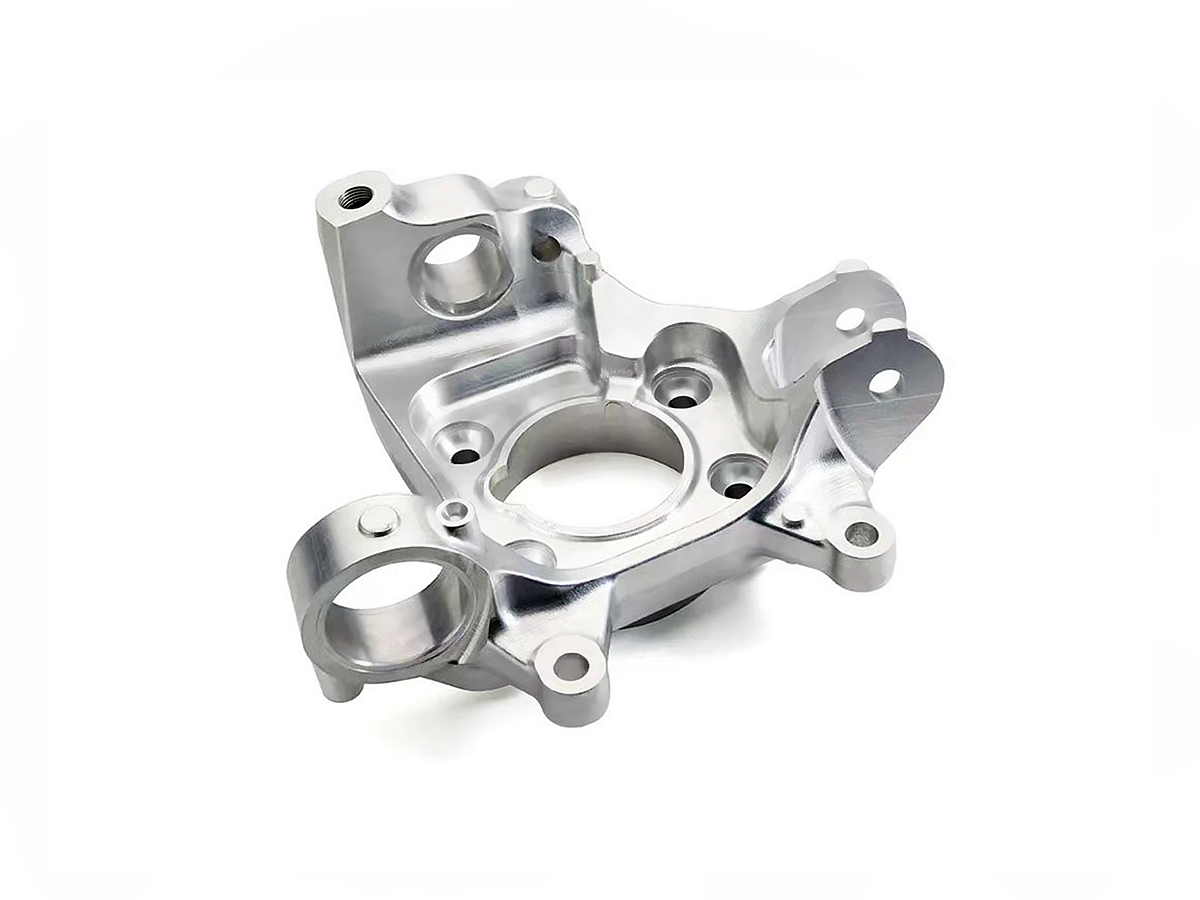Custom CNC Machined Parts for Robotic Frames and Structural Components
Introduction to CNC Machined Robotic Structural Components
Industries such as robotics and automation require precision-engineered structural parts that deliver exceptional strength-to-weight ratios, dimensional stability, and reliable performance under dynamic loading conditions. Materials frequently used in CNC machining for robotic frames and structural components include lightweight aluminum alloys (6061, 7075), high-strength titanium alloys (Ti-6Al-4V), stainless steels (SUS304, SUS316), and engineering plastics (PEEK, ABS).
Leveraging state-of-the-art CNC machining services, these materials are precisely shaped into complex structural components that ensure accurate movement, reduced vibration, and enhanced durability in robotic systems.
Material Performance Comparison for Robotic Structural Parts
Material | Tensile Strength (MPa) | Density (g/cm³) | Corrosion Resistance | Typical Applications | Advantage |
|---|---|---|---|---|---|
310 | 2.7 | Excellent | Lightweight frames, brackets | Lightweight, good machinability | |
540-570 | 2.8 | Good | High-stress structural parts | High strength-to-weight ratio | |
950-1100 | 4.43 | Excellent | Robotic arms, load-bearing structures | Exceptional strength, fatigue resistance | |
520-720 | 7.93 | Excellent | Heavy-duty frames, corrosion-prone areas | Superior corrosion resistance |
Material Selection Strategy for CNC Machined Robotic Components
Selecting suitable materials for robotic frames and structural components involves evaluating strength, weight, corrosion resistance, and cost-effectiveness:
Aluminum 6061-T6 is ideal for lightweight frames and brackets where moderate strength (310 MPa) and excellent machinability offer significant cost advantages and reduced overall weight.
Aluminum 7075-T6 provides superior strength (570 MPa tensile strength) and rigidity, ideal for high-stress robotic structures requiring increased performance without significantly increased mass.
Titanium Ti-6Al-4V offers unmatched strength (up to 1100 MPa) and outstanding fatigue resistance, making it the best choice for critical robotic arm components and highly dynamic load-bearing structures.
Stainless Steel SUS304 is selected for robust robotic frames operating in corrosive or hygienic environments, delivering exceptional corrosion resistance and mechanical reliability.
CNC Machining Processes for Robotic Structural Components
CNC Machining Process | Dimensional Accuracy (mm) | Surface Roughness (Ra μm) | Typical Applications | Key Advantages |
|---|---|---|---|---|
±0.005-0.01 | 0.2-0.8 | Complex robotic arms, precision brackets | High accuracy, excellent surface quality | |
±0.01-0.02 | 0.4-1.6 | Axles, pins, rotational parts | Exceptional rotational precision | |
±0.01-0.02 | 0.4-1.2 | Intricate structural components, joints | Superior complexity handling, high precision | |
±0.02-0.05 | 1.6-3.2 | Structural bolt holes, fastener positions | Accurate hole positioning |
CNC Process Selection Strategy for Structural Components
Choosing the appropriate CNC machining method depends on structural complexity, dimensional tolerances, and specific application requirements:
Robotic components with complex geometries or highly integrated shapes (±0.005 mm accuracy) benefit from 5 Axis CNC Milling for its unmatched precision, detailed features, and excellent surface finishes (Ra ≤0.8 µm).
Cylindrical components, axles, or structural pins requiring tight rotational tolerances (±0.01 mm) and smooth finishes are ideally fabricated using CNC Turning.
Intricate structural joints, connection brackets, or unique robotic configurations requiring moderate to high precision (±0.01–0.02 mm) benefit from Precision Multi-Axis Machining.
Structural parts requiring precise hole placements for assembly and alignment purposes use CNC Drilling, ensuring consistent accuracy and repeatability.
Surface Treatment Performance Comparison for Structural Components
Treatment Method | Surface Roughness (Ra μm) | Wear Resistance | Corrosion Resistance | Surface Hardness | Typical Applications | Key Features |
|---|---|---|---|---|---|---|
0.6-1.2 | Moderate-High | Excellent (ASTM B117 >800 hrs) | HV 200-400 | Aluminum frames, brackets | Enhanced corrosion protection, durability | |
0.8-1.6 | Moderate | Excellent (ASTM B117 >1000 hrs) | Unchanged | Stainless steel frames, hygienic components | Superior corrosion resistance | |
1.0-2.0 | Good | Excellent (ASTM B117 >500 hrs) | HB 2H-3H | Structural housings, visible frames | Durable finish, aesthetic appeal | |
0.2-0.6 | High (HV1500-2500) | Exceptional (ASTM B117 >1000 hrs) | HV 1500-2500 | High-wear titanium parts, joints | Excellent hardness, wear protection |
Surface Treatment Selection for Robotic Structural Parts
Choosing surface treatments involves balancing corrosion resistance, aesthetic considerations, and wear protection:
Aluminum robotic frames benefit greatly from Anodizing, enhancing corrosion resistance (ASTM B117 >800 hrs) and increasing surface hardness (HV 200-400).
Stainless steel structural components operating in hygienic or chemically aggressive environments rely on Passivation, delivering superior corrosion resistance (ASTM B117 >1000 hrs) without altering surface integrity.
Powder Coating is ideal for structural housings and frames, providing attractive finishes, additional corrosion resistance (>500 hrs ASTM B117), and abrasion protection.
High-wear robotic joints or load-bearing titanium components require PVD Coating for exceptional hardness (HV 1500-2500) and superior corrosion and wear resistance.
Typical Prototyping Methods for Structural Components
CNC Machining Prototyping: Accurate, detailed prototypes ideal for verifying mechanical performance and assembly precision.
Metal 3D Printing (Powder Bed Fusion): Rapid prototyping for initial functional testing and evaluating structural designs.
Quality Assurance Procedures
Precision Dimensional Inspection (CMM): Verifying accuracy within ±0.005-0.01 mm tolerances.
Surface Roughness Inspection (Profilometer): Confirming specified surface finishes.
Mechanical and Fatigue Testing: Evaluating tensile strength (ASTM E8) and fatigue resistance (ASTM E466).
Non-destructive Testing (Ultrasonic & Radiographic): Identifying internal flaws or structural defects.
ISO 9001 Documentation: Comprehensive quality records for traceability and reliability assurance.
Industry Applications
Robotic arms and end-effectors.
Structural frames for automated systems.
Precision support brackets and housings.
Related FAQs:
Why is CNC machining ideal for robotic structural parts?
Which materials best suit robotic frame manufacturing?
How do surface treatments enhance robotic part performance?
What quality checks are critical for CNC machined robotic components?
Which industries benefit most from precision CNC robotic structures?

